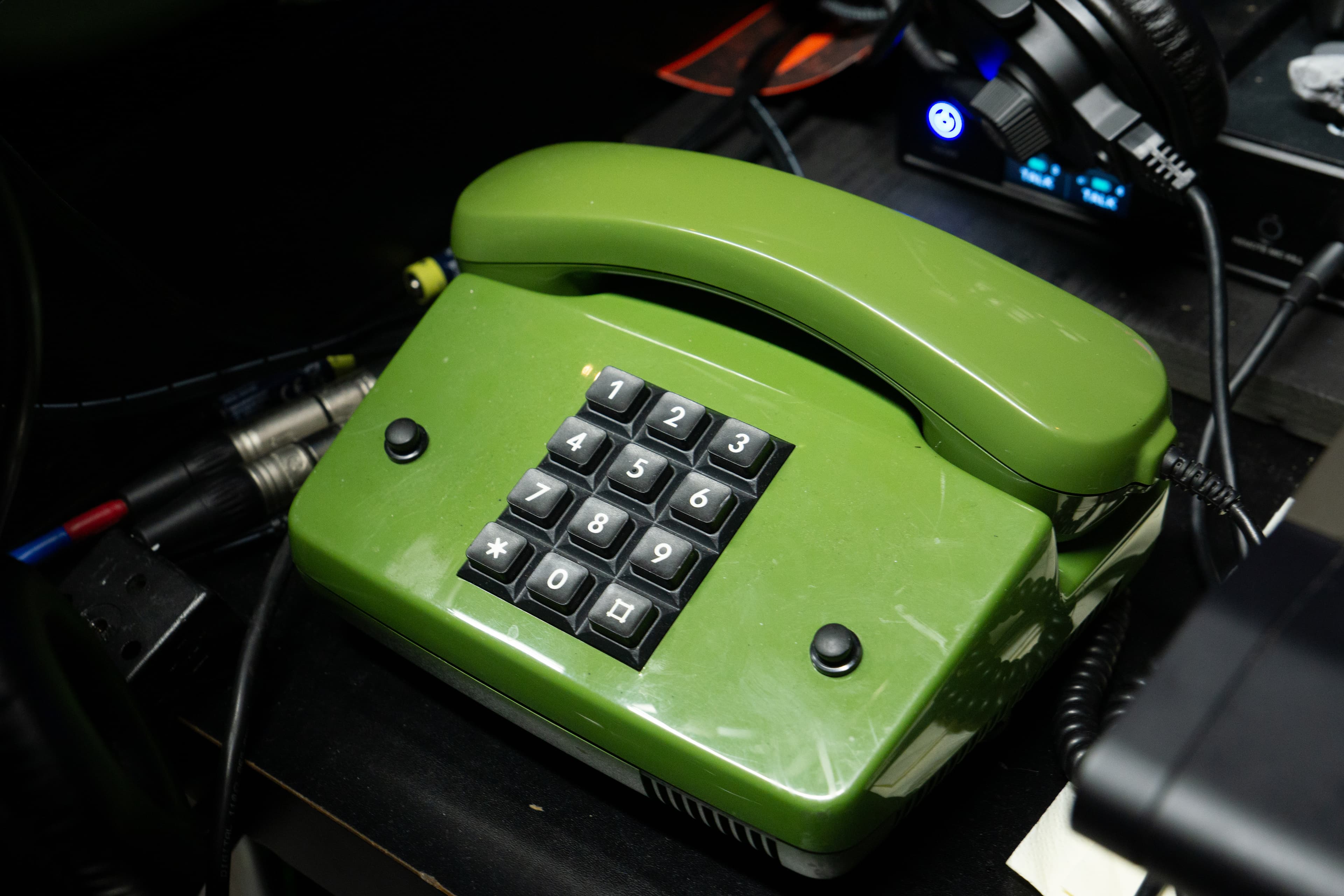Using an Analog Telephone as a Talkback Mic

Talkback mics are boring. So why not use an old analog telephone instead?
Modifications
I used a "FeTAp 756 D", which was relatively common here in Germany. It opens up after unscrewing four screws on its underside, after which the upper half of the case can be lifted up.

Interior of a mostly identical FeTAp 751-1
To make space for the modification, i removed the PCB. I wanted to keep the switch for muting the mic, so i unsoldered it to put it back later.
Schematic
The objective was to use the microphone, as well as the speaker inside the handset. The speaker is relatively straight forward to modify. You could just attach a 1/4 TRS Jack and use it like normal headphones, but i wanted to connect it directly to a stagebox via XLR. For that, there are some specifics you need to consider, depending on the stagebox used.
The microphone is a little more involved: These old telephones commonly used carbon microphones, which need a bias voltage to work correctly.
The following circuit most certainly isn't ideal, but it works for my usecase and uses common components, which i already had on hand.

I used an external 12V power supply as a source for the bias voltage. With a little more work, it's probably possible to use phantom power, but this way is easy and works really well.
Especially cheaper power supplies don't output perfectly clean DC, so Capacitor C3 is used to filter it a little better and remove some of the audible frequency content my power supply produced. R1 and R2 serve as a load for the microphone and at the same time limit the current, which causes a bias voltage of about 5V over the mic. Also, they form a voltage divider to bring down the mic level to a usable level (the voltage over R3). This signal still has a DC-Offset of about 3.5V, which is removed by the two coupling capacitors C1 and C2. The mute switch just shorts the Output, while the resistor R3 ensures a low DC voltage over the switch, to hopefully prevent pops when closing the mute switch.
The speaker has a relativley high impedance of 330 Ohms. The "proper" way would be to use a headphone amplifier, but most current stageboxes can drive such a load directly from their XLR outputs. Depending on the model, manufacturers recommend different ways to hook up an unbalanced load to the balanced output. The manual of the Yamaha RIO3224-D2 and RIO1608-D2 recommends shorting pin 1 and 3, for others it might be better to leave pin 1 floating. The latter should work in almost all cases, so that's what i would recommend.
Assembly
I soldered everything onto some veroboard and used external XLR connectors on a short bit of cable, as the rear of the case isn't big enough for chassis connectors. I also put the mute switch back into its place, but added some washers underneith, to account for the thickness of the pcb that was there before.

Mute switch with two wires soldered to the normally open contact

The modded telephone
The modded telephone can now be used as a talkback mic and speaker!